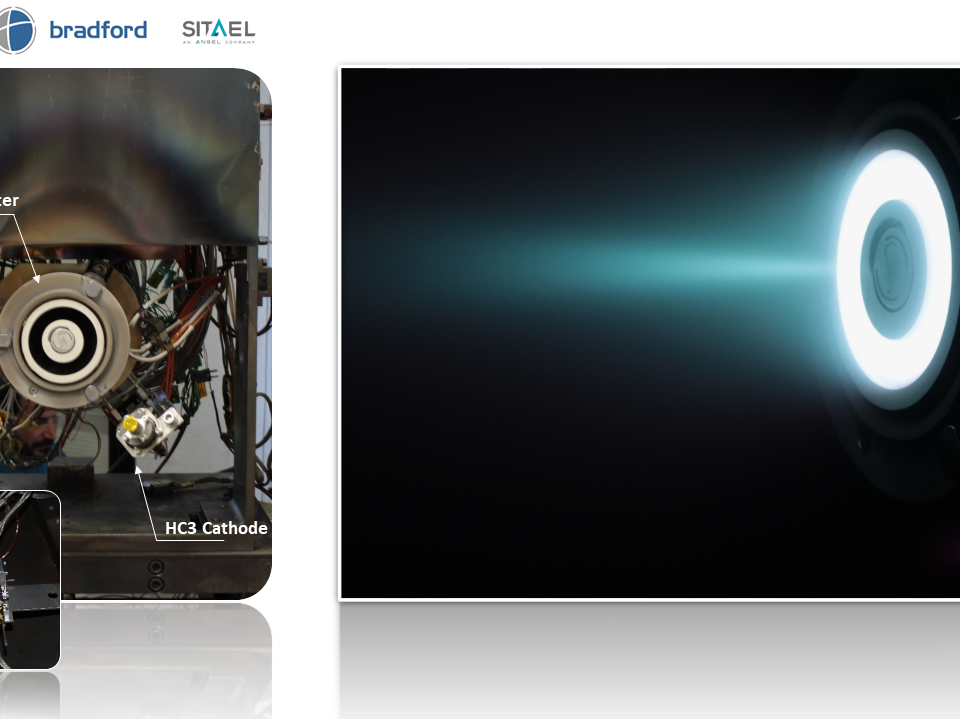A new successfull coupling test for CHEOPS LEO Electric Propulsion System
The LEO (Low Earth Orbit) System coupling test campaign* is the consolidation of 4 years of cooperation between SITAEL (Italy), Bradford Engineering (Netherlands) and Safran (France) on the development of a fully European competitive propulsive system for low earth orbit satellites based on Hall effect electric propulsion. A preliminary coupling test between the Thruster Anode, the Cathode and the FMS** have been performed successfully in late 2019. The next step for the coupling test which is to couple the anode, the cathode and the PPU has been performed successfully beginning of July 2020. The thruster was operating in a power range from 305W to 744W which corresponds to a System power input range from 327W to 796W. A last test slot is foreseen later in 2020 (November/December) to finalize the coupling characterization. The System PDR, expected in early 2021, will conclude this European LEO System development phase. The CHEOPS project is a challenging space project that proposes to develop three different Hall Effect Thruster (HET) Electric Propulsion Systems (EPS), in order to serve different application fields or orbits: – a low power for Low Earth Orbit (LEO) applications; – a dual mode EPS for GEO/NAV applications; – a >20 kW high thrust EPS for exploration applications. The CHEOPS project is funded by the European Union’s Horizon 2020 research and innovation programme under Grant Agreement No 730135. *LEO System coupling tests are performed in IV-4 Test Facility (Sitael) **Bradford Engineering is in charge of the Fluid Management System (FMS), Sitael of the Cathode and the PPU, Safran of the Thruster Anode and the System
Keywords
space, electric propulsion, hall effect thruster, LEO, New Space



